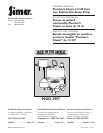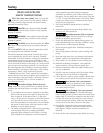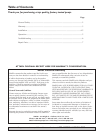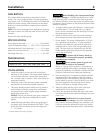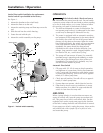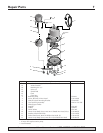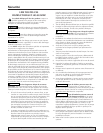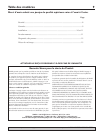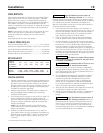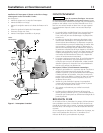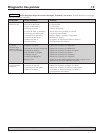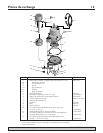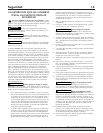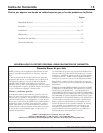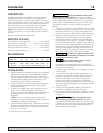
Safety 2
For parts or assistance, call Simer Customer Service at 1-800-468-7867 / 1-800-546-7867
READ AND FOLLOW
SAFETY INSTRUCTIONS!
This is the safety alert symbol. When you see this
symbol on your pump or in this manual, look for
one of the following signal words and be alert to the
potential for personal injury!
DANGER warns about hazards that will
cause serious personal injury, death or major property
damage if ignored.
WARNING warns about hazards that can
cause serious personal injury, death or major property
damage if ignored.
CAUTION warns about hazards that will or
can cause minor personal injury or property damage if
ignored.
The word NOTICE indicates special instructions which
are important but not related to hazards.
Electrically powered sump pumps normally give many
years of trouble-free service when correctly installed,
maintained, and used. However, unusual circumstances
(interruption of power to the pump, dirt/debris in the
sump, flooding that exceeds the pump’s capacity, electri-
cal or mechanical failure in the pump, etc.) may prevent
your pump from functioning normally. To prevent possi-
ble water damage due to flooding, consult your dealer
about installing a secondary sump pump, a DC backup
sump pump, and/or a high water alarm. See the
“Troubleshooting Chart” in this manual for information
about common sump pump problems and remedies. For
more information, see your retailer, call Simer customer
service at 1-800-468-7867 or visit our website at
www.simerpump.com.
Hazardous Voltage. Risk of electrical
shock. Shock can cause serious injury or death. Failure
to follow the warnings below can result in fatal electric
shock.
1. If your basement has water or moisture on the floor,
do not walk on the wet area until all the power has
been turned off. If the shut-off box is in the base-
ment, call the electric company or the hydro authori-
ty to shut off the service to the house, or call your
local fire department for instructions. Do not handle
the pump or pump motor with wet hands or when
standing on wet or damp surfaces.
2. The pump is equipped with a three-prong, grounding
cord and plug. Plug into a properly grounded,
grounding-type receptacle only. Where a 2-prong
wall receptacle encountered, it must be replaced
with a properly grounded 3-prong receptacle
installed in accordance with codes and ordinances
that apply. Do not modify the cord or plug. Plug into
a 115V, 15 amp individual branch circuit only. Make
certain your power source conforms to the require-
ments of your equipment.
3. All wiring should be performed by a qualified
electrician.
4. Protect the electrical cord from sharp objects, hot
surfaces, oils, and chemicals.
Hazardous pressure. Risk of explosion
and personal injury. Failure to follow the warnings
below can result in personal injury.
5. Secure the discharge line before starting pump. An
unsecured discharge line will whip, possible causing
personal injury and/or property damage.
6. Know the pump application, limitations and poten-
tial hazards.
7. Wear safety glasses at all times when working with
pump.
8. Keep the work area clean, uncluttered and properly
lighted - replace all unused tools and equipment.
9. Keep visitors at a safe distance from working area.
10. Make the workshop child-proof - with padlocks,
master switches, and by removing starter keys.
11. Release all pressure within the system before servic-
ing any component.
12. Provide a means of pressure relief for pumps whose
discharge line can be shut-off or obstructed.
13. Check hoses for weak or worn condition before each
use, making certain that all connections are secure.
Burn Hazard. Can cause personal
injury. Do not touch an operating motor. Modern
motors can operate at high temperatures. To do so
can cause personal injury.
Risk of flooding. Can cause personal
injury or property damage. If a flexible discharge
hose is used, pump may move around in sump when
motor starts. If it moves far enough so that the switch
hits the side of sump, the switch may stick and pre-
vent the pump from starting. Make sure the pump is
secured so it cannot move around in the sump.
14. Periodically inspect the sump, pump and system
components. Keep the sump free of debris and for-
eign objects. Perform routine maintenance as
required.
15. Drain all the water from the system before servicing.



